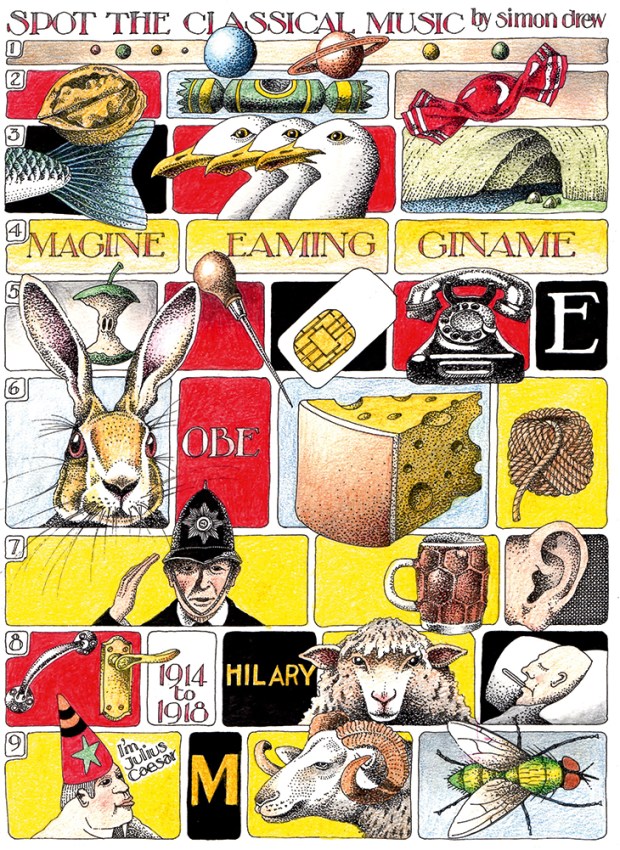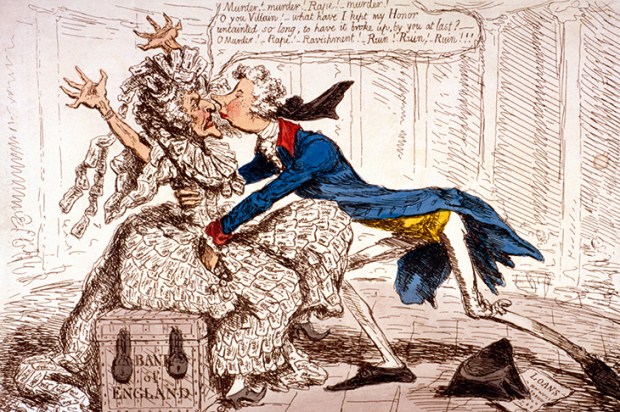It’s hard not to love a book that starts with its author fearing a police sting while flogging sex toys at a hen party in Texas. The year is 2004 and Hallie Lieberman is attending grad school in Austin and supporting her studies by working as a home party organiser for Forbidden Fruit, local purveyor of marital aids: ‘Christy is rattling off her order: a jelly vibrator, a cock ring, a bottle of Eros lubricant.’ Just one snag; devices that are intended ‘primarily for stimulation of the human genital organs’ are deemed illegal in the state of Texas. They’re illegal to this day in Louisiana.
So Lieberman has been trained to say her wares are designed for ‘artistic, educational and scientific purposes’, which puts a new spin on the Rampant Rabbit. Prohibited from explaining the true function of a vibrator, Lieberman finds herself talking gobbledegook to customers, ‘And once you put your massager on the man on the boat, you’ll want to go out to sea every day!’ As Lieberman admits, this might make more sense in a notoriously repressive nation: ‘But I lived in America, where strip clubs abound, binge-drinking is celebrated, and possession of semi-automatic weapons are legal. So why the hang-up on sex toys?’ Before you can say ‘Spanish Fly’ Lieberman has signed up to study for a PhD in the history of marital aids in order to wrestle this complex question to the bedroom floor.
Lieberman’s diverting book Buzz: A Stimulating History of the Sex Toy is as much a study of sexual mores — and hypocrisy — in the United States, as it is the story of a multi-million dollar industry. Legislators throughout history were keen to shore up the view that women’s sexual satisfaction (or dissatisfaction) should take a back seat to men’s. While Lieberman was trying to circumvent the prohibition on the sale of vibrators and dildos in Texas, Viagra was available nationwide, covered by health insurance and even promoted by the US Senator Bob Dole.
We can place some of the blame on Sigmund Freud, who informed the world there were two types of female orgasm, the clitoral and the vaginal, and mature, psychologically healthy women graduated to the latter — conveniently implying a sane woman should hit the big O via penetrative sex alone. This proved to be a bit of a downer for the vast majority (around 80 per cent) of females who report no such joy. Fortunately, we women are a subversive lot and when electric massage devices finally came onto the market, we knew exactly where to apply them.
Buzz canters swiftly and authoritatively through the history of the dildo before we get to its more thrilling cousin, the vibrator — so effective at producing ecstasy that many men feared they’d be replaced. One of the earliest devices Lieberman tracks down is Young’s Rubber Rectal Dilator, patented in 1892 and marketed for the treatment of constipation, enlarged prostates, asthma and — counterintuitively — masturbation (restoring ‘these sexual wrecks of humanity to a life of happiness’).
Having discovered the rectal dilator, Lieberman falls ‘down the rabbit hole of rubber sex-toy history’. She discovers the best way of uncovering other such products is to scour late 19th-century sporting goods catalogues and the records of self-appointed anti-vice societies, who made it their business to expose obscenity in all its forms.
The most determined proselytiser was ‘a portly dry goods salesman’ named Anthony Comstock, who blamed a friend’s suicide on his purchase of pornography. In 1872 Comstock helped the New York YMCA create their commission for the suppression of vice. He was also appointed special agent in the US Post Office, ‘with power to confiscate immoral matter in the mails and arrest those sending it’. Within a year he’d impounded ‘60,300 articles made of rubber for immoral purposes, and used by both sexes’. From then on the narrative moves in circles: one body tries to manufacture and market sex toys; another is determined to stop them.
The adversaries aren’t always who you’d expect, as chapters dealing with the polarised feminist factions of the 1960s and 1970s demonstrate. Betty Dodson abandoned her marriage and embraced vibrators — in particular the Hitachi Magic Wand — as an empowering and extraordinarily effective aid to orgasm. She held naked all-female masturbation workshops, where she encouraged participants to try vibrators and to examine their vaginas in hand mirrors.
More militant feminists and many lesbians in the movement opposed any toy resembling a phallus; while feminist intellectuals from the professional classes found Dodson’s emphasis on sexual fulfilment distasteful. They wanted parity in the workplace, but weren’t so angsty about the bedroom. In the early 1980s Joani Blank, the founder of San Francisco’s impeccably feminist sex shop Good Vibrations tried to place ads in Ms magazine, but was turned down. So she trailed the publication’s founder Gloria Steinem to a book signing and pleaded her case. Steinem just said curtly, ‘Oh yeah, I heard about that’, and did nothing.
Many leading lights of the sex-toy trade are deliciously improbable. Ted Marche was one of the most skilled American ventriloquists of the 1950s and 1960s, but changed tack when a friend asked if he could help him make prosthetic penises. He became the first manufacturer to fret about accurate skin colour and use medical grade materials.
Another perfectionist was Grenada-born Gosnell Duncan, who was wheelchair-bound after an accident in 1965 and realised that high-quality dildos were the most effective way for men in his predicament to salvage erotic intimacy. Dell Williams was an actress turned advertising executive, who set up NYC’s first feminist sex-toy emporium after a ‘pimply’ male sales clerk at Macy’s asked, when she was buying a Hitachi Magic Wand, ‘What do you want it for?’
There are a few omissions in this jauntily written, illuminating history. Lieberman implies that Japan was the leading sex-toy innovator of the 20th century, but doesn’t really explain why. And there’s no discussion of recent developments, such as app-controlled vibrators. But as all sex educators know, you can’t please all of the erotomaniacs all of the time. Like a Magic Wand, Buzz hits the sweet spot far more often than it misses.
Got something to add? Join the discussion and comment below.
Get 10 issues for just $10
Subscribe to The Spectator Australia today for the next 10 magazine issues, plus full online access, for just $10.
You might disagree with half of it, but you’ll enjoy reading all of it. Try your first month for free, then just $2 a week for the remainder of your first year.














Comments
Don't miss out
Join the conversation with other Spectator Australia readers. Subscribe to leave a comment.
SUBSCRIBEAlready a subscriber? Log in